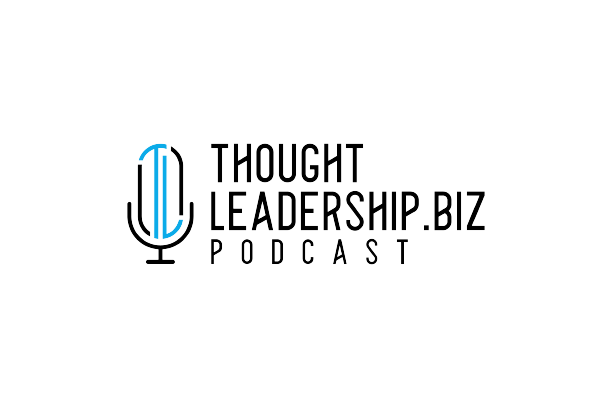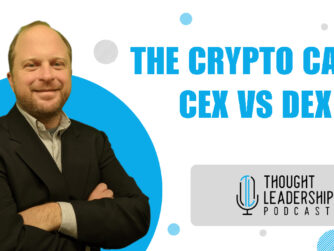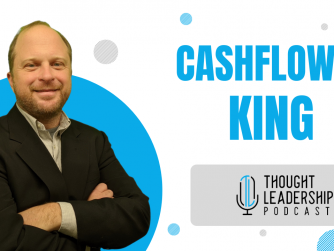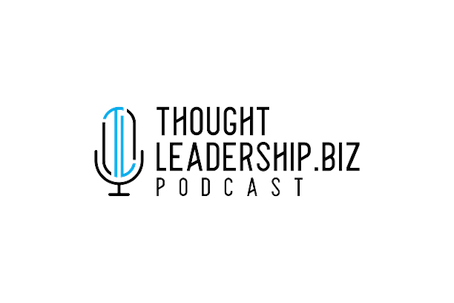The blockchain is a digital ledger of all cryptocurrency transactions. It is constantly growing as "completed" blocks are added to it with a new set of recordings. Each block contains a cryptographic hash of the previous block, a timestamp, and transaction data. Bitcoin nodes use the block chain to differentiate legitimate Bitcoin transactions from attempts to re-spend coins that have already been spent elsewhere.
In this episode, Mr Machut will discuss the basics of blockchain.

Read / Watch / Listen
Stream this article from your favorite podcast audio or video streaming service as referenced below.
Read: Below
Watch: Blockchain Basics
Listen: Blockchain Basics
More ways to read, watch and listen
Read the Article
BLOCKCHAIN BASICS
Hi everyone, and welcome to another blockbusting episode of ThoughtLeadership.biz. I’m Chris Machut and in today’s episode we’re exploring the rise of blockchain.
If you ask the average Joe what blockchain is, he might provide you with a variety of answers:
Isn’t that the thing where the prisoners get chained up and break rocks in the desert?
No, that’s a chain-gang. It was also outlawed in the 1950’s . .
Is it that game where you have to drop little coloured blocks on top of each other.
No. That’s Tetris. . .
Or, Isn’t it where your sink gets blocked up and you have to call a plumber?
No. That’s a blocked drain, stupid.
But honestly, it’s no surprise that so many people think they’ve heard of it but still have no idea what it is.
It’s also true that those who think they know what it is really don’t – at least not to the level they need to if they want to save their hard-earned savings literally going down the ‘blockchain’. . .
So, what exactly is it?
Well, as you’ve probably already guessed: it’s complicated. . .
So today, in this first episode, we’ll take some baby steps into the blockchain universe and from there, over the next few episodes in the series, we’ll steer a course through the asteroid belt that is modern digital commerce.
*****
But before we blast off, let me entertain you with my usual aside by reminding you to check out all my newest articles, podcasts and more at ThoughtLeadership.biz. If you prefer, you can catch me in person on YouTube or listen to my dulcet tones via Spotify and Anchor.fm. If all that’s just not enough, then get yourself over to Apple and Google Podcasts or head on over to Twitter and LinkedIn, where you can subscribe for notifications!
*****
Alright, so let’s get down to business.
Pretty much everyone agrees on one thing: that 21st Century tech has seen some truly massive advancements – many would say they’re the biggest since the internet began.
And they’d be right.
Google knows it. Amazon knows it, and many of the other colossal tech companies know it, too, which is why they’re fighting to get their slice of the pie by creating their own blockchain solutions.
They understand the importance of and power of decentralizing the tech, and we should too.
Whether we’re into cryptocurrencies or other blockchain technologies, it’s crucial that we understand how they work, what solutions they create and what other potential benefits there are.
*****
So, here goes, an idiot’s guide to blockchain technology:
A blockchain is. . . well. . . pretty much what it says it is: a bunch of blocks in a chain.
These blocks each contain digital information which is tied up in neat little bundles. Imagine them as something like a zip-file.
It’s usually helpful to use an example, so let’s have a look at one of the most well-known blockchain technologies: Bitcoin.
It’s pretty simple stuff really: inside each Bitcoin block is a record of all the transactions that have happened within a certain timeframe. All of these blocks together form the blockchain.
The blockchain is essentially just a huge network of computers located across the globe with each computer that is part that, as part of that blockchain automatically possesses all the data, and transactions that have taken place across the chain.
One huge advantage of such a decentralized solution is that it can survive power outages, political interference and even natural disasters – as long as the blockchain is big enough.
*****
So, you might now be wondering, How many types of blockchain are there?
Well, it’s safe to say that there are over 10,000 different blockchains in operation today. Most of them are either public or private.
An example of a public blockchain would be cryptocurrencies like Ethereum, an open source software that anyone on the network can use.
Private Blockchains use the same principles as public ones but the software that drives them is held on private servers. Major companies like Microsoft and Accenture are using these types of blockchains to manage their inventories and supply logistics.
Fundamentally, this sounds like a great idea, right?
But in reality, it’s a pretty terrible one.
There are plenty of examples of people ripping others off by taking something that SHOULD be public and making it private just so they can call it a blockchain – but don’t get me started on that.
I’ll have a proper rant about it in a future episode. . .
Blockchain is already disrupting industries.
- It’s disrupting banking and payment stems from providing completely transparent and protected services. It’s true that many banks are also now playing catch-up by developing their own blockchain solutions – but we’ll talk about decentralized finance more in another episode, too.
- It’s disrupting online data storage solutions, which rely on a huge centralized system that’s vulnerable to data breaches.
- And it’s disrupting voting systems, as well. Blockchain technologies make elections more transparent and in doing so more valid and reliable than ever before.
Basically, guys, think of it like this: a blockchain disrupts “public data” by enabling the creator to participate in a public ledger. And the key word here is “public”.
In other words, it puts the power back in the hands of the people.
*****
Many people think that Bitcoin and other technologies like it are recent, but in relative terms that’s not really true.
They first emerged immediately after the financial collapse of 2007-8 – which was no coincidence. At the time, in response to collapse, people began encouraging more autonomy within the financial system . . . and blockchain was born.
Blockchain’s not just the biggest, baddest new boy on the block in terms of commerce, data storage and politics.
It’s also actively stretching its technological tentacles into the creative arenas.
Let’s take the art scene as an example.
As well as being able to help identify genuine works of art – let’s remember that back in 2014 The Fine Arts Expert Institute (FAEI) in Geneva stated that over 50% of the artworks it had examined were either forged or not attributed to the correct artist! – blockchain technologies are generating new approaches to art collecting and even new art forms.
Its impact on the artworld is already undeniable.
Blockchain has become part of artists’ practice, both as subject and medium. There is a nascent blockchain art movement from bitcoin graffiti art to artworks such as The Last Bitcoin Supper by French artist Youl, which sold for nearly USD 3,000 on eBay in 2014.
Other examples include Plantoids – blockchain-based robotic plants which interact with people who donate via Bitcoin and Ethereum – and CryptoKitties, a virtual game that allows players to purchase, collect, breed, and sell various types of virtual cats.
So, while all these things sound great, in terms of investment, investing in digital artworks is simply a new investment instrument.
It’s just another way to store value as ‘art’ as a speculative investment.
But it has no actual value, just like more traditional art works.
After all, you might have the Mona Lisa hanging on your wall, but what are you actually going to DO with it?
It’s so easy to get hypnotized by blockchain that you can throw all your money at it and end up broke. Very quickly.
Anyone who invested wildly in Bitcoin in the early days will tell you that – maybe for free. . .
The issue is that despite the massive rise of blockchain technologies and solutions, there have been many more colossal failures than successes.
But more on that next week. . .
*****
So, there you have it, a whistlestop tour along the blockchain. Check in again next week for a deeper dive. . .
This is Chris Machut.
Stay safe out there!
Latest posts by ThoughtLeadership (see all)
- Episode 24 – The Crypto Cake CEX vs DEX - January 27, 2023
- Episode 23 – Blockchain Basics - December 16, 2022
- Episode 22 – Be Alpha - November 18, 2022










